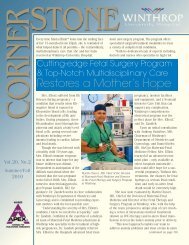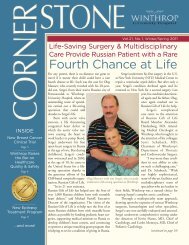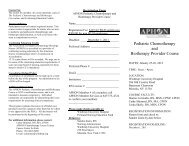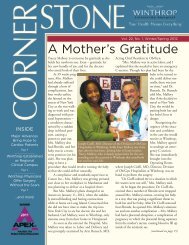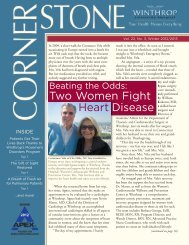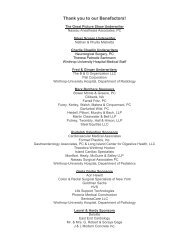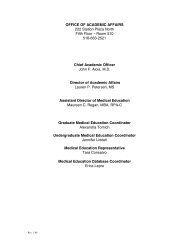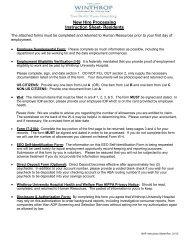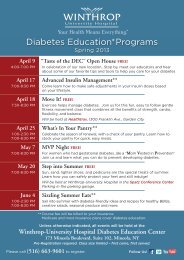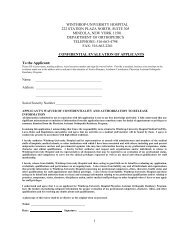interventional cardiology fellowship curriculum - Winthrop University ...
interventional cardiology fellowship curriculum - Winthrop University ...
interventional cardiology fellowship curriculum - Winthrop University ...
You also want an ePaper? Increase the reach of your titles
YUMPU automatically turns print PDFs into web optimized ePapers that Google loves.
Restenosis: The Clinical Issues<br />
Since the inception of percutaneous transluminal coronary angioplasty (PTC A) almost 25<br />
years ago, percutaneous coronary revascularization has been an increasingly attractive<br />
alternative to surgical revascularization and medical therapy for coronary artery disease<br />
(CAD). Currently, well over 1 million percutaneous coronary intervention (PCI)<br />
procedures are performed each year worldwide, with the majority of cases being<br />
performed in North America and Western Europe, and the rate doubles every 5 to 8 years.<br />
Despite the steady and continuous advancement in the field of <strong>interventional</strong> <strong>cardiology</strong>,<br />
restenosis remains an important limitation of percutaneous coronary revascularization.<br />
Prior to the advent of drug-eluting stents, about one quarter of procedures were performed<br />
in lesions that were previously treated with PCI. Considering that more than 700,000<br />
cases were performed in the United States annually at that time, this translated to a cost<br />
of $3.5 billion/year for the treatment of restenosis. In 2003, drug-eluting stents became<br />
available, after studies confirmed their significant reduction in the development of<br />
restenosis. There is no question that drug-eluting stents have been a breakthrough,<br />
resulting in the treating of more complex lesions and reducing the need for repeat<br />
procedures over the ensuing year. However, over the past year, it has become clear that<br />
these stents also carry a somewhat higher risk of late thrombosis.<br />
Fellows will understand the pathophysiology of restenosis, the various methods of treating<br />
and prevention restenosis, the risks and benefits of drug-eluting stents, and the challenges<br />
in developing next generation stents to combat restenosis while preserving a higher safety<br />
profile.<br />
<br />
Endovascular Options for Peripheral Arterial Occlusive and Aneurysmal<br />
Disease<br />
By the first quarter of the twenty-first century, diseases of the vascular tree will surpass<br />
infectious pathologies as the number one cause of death worldwide. In the United States<br />
alone, cardiovascular disease or stroke was listed as a primary or contributing cause in<br />
1.4 million deaths in 1999, or about 60% of all deaths that year. With demographic trends<br />
toward more aged populations, not only quantity, but quality of life issues are coming to<br />
the fore as well. The prevalence of intermittent claudication ranges from about 1% for<br />
people ages 40 to 44 years up to almost 7% for those 70 years old and above. Worldwide,<br />
the burden of lower limb amputations, which is a multifactorial problem, ranges from 120<br />
per million population in Western Finland to 500 per million in the United Kingdom<br />
annually. In the United States, there are more than 400,000 hospitalizations for peripheral<br />
arterial disease (PAD) and close to 80,000 amputations annually.<br />
26 Revised : 8/23/09<br />
6/30/10



